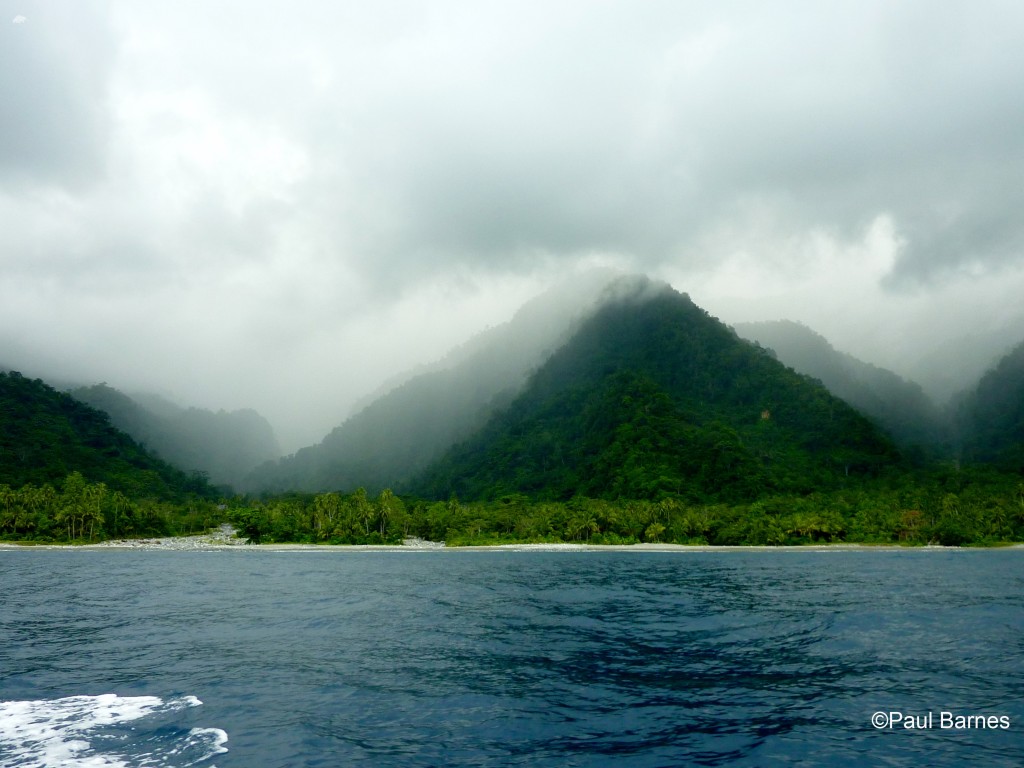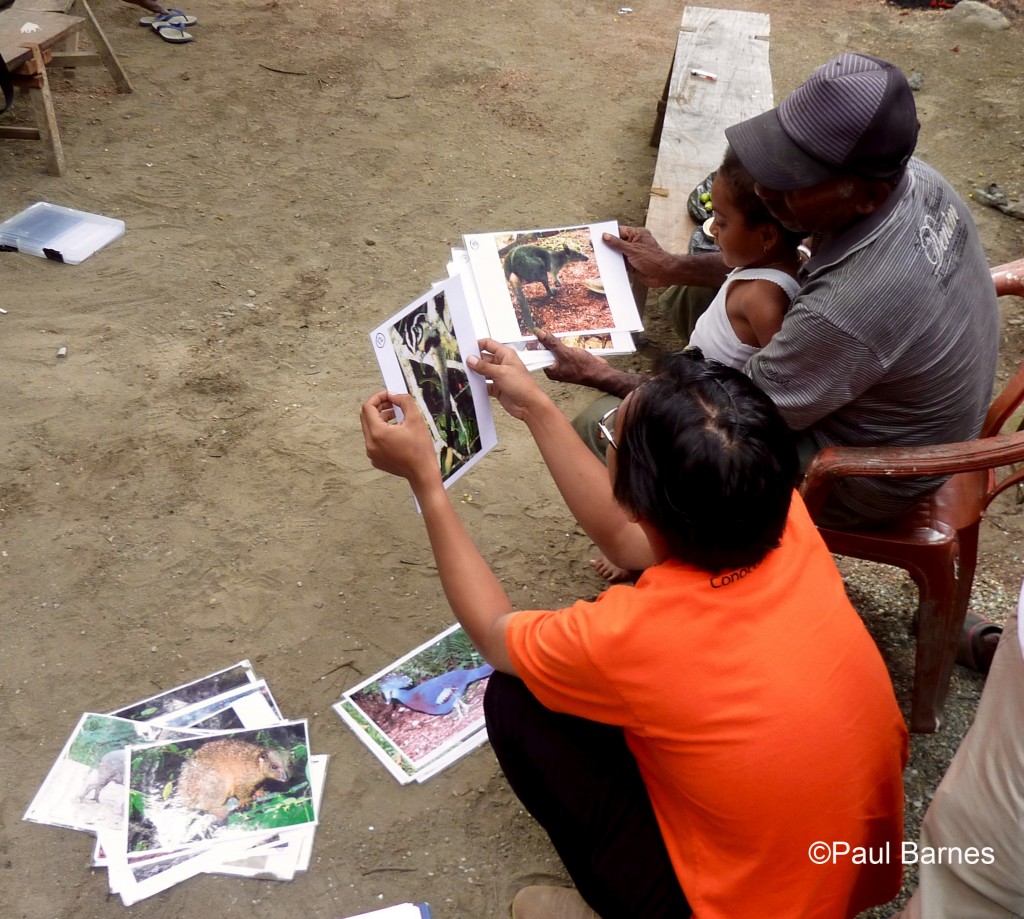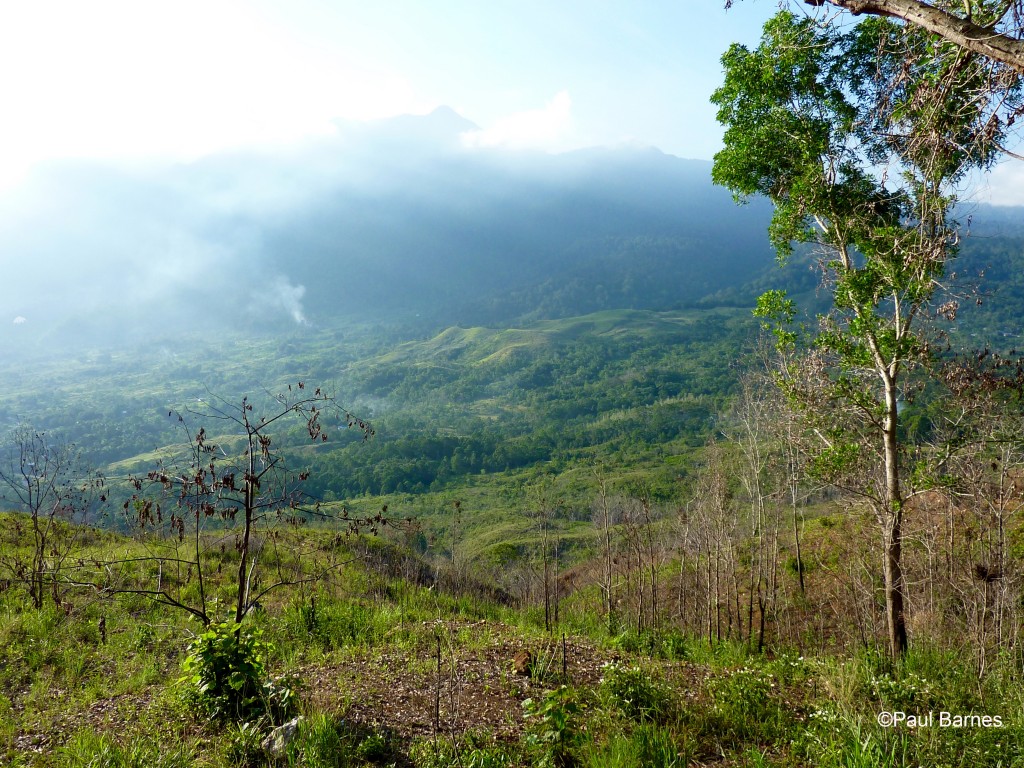
Paul Barnes is a fresh-faced PhD student from the Institute of Zoology. He is passionate, well-spoken and has devoted himself to what some people believe is a hopeless cause. Paul hopes to find evidence of, maybe even a living specimen of, Sir David Attenborough’s long-beaked echidna. This species has not been seen by western science since 1961. The only one we have is a battered and rather squashed taxidermy museum specimen. Its beak is broken, its body beaten, and there’s some question about whether or not it even counts as a distinct species. Paul is determined to root it out, and has spent the last several weeks searching for it in Papua.
Let’s get the bad news out of the way first; Paul and the team from ZSL Indonesia did not find an echidna, nor did they find any conclusive signs of one (such as tracks or distinctive “nose-pokes”). However, part of the purpose of Paul’s trip was to talk to the locals in order to find out if they had seen any echidnas or signs of them and negotiate permission to return and continue the search next year.
The echidna is culturally important to the indigenous people of the Cyclops Mountains in Papua, where it is found. In some villages, being ordered to find the echidna is the most severe punishment that can be given, due to the difficulty of finding the animal. It is even rumoured that people have killed themselves over taking the punishment, because it is so hard to find this mysterious animal in the mountains. There is also a tradition that, should there be a conflict between two individuals or families, the sharing of echidna meat would bring peace.
Paul quickly discovered how elusive the echidna is, even to highly skilled local hunters. They reported that the last sighting of an echidna was back in the mid-90s, and before that traced back to the 80s or even 70s. Many of those who had seen an echidna had done so by chance, either catching them in a snare meant to catch pest animals such as possums and bandicoots, or encountering them while hunting for pigs in the woods.
Although we may consider them similar, the local people make a distinction between hunting and snaring. Snaring is generally done alone, and is used to trap animals that might destroy or eat crops. Sometimes, the animal snared is eaten, but in many cases this is not the primary purpose of the snare. Hunting, on the other hand, is generally done only once or twice a month, and is usually for wild pigs. The hunters go into the woods in small groups, venture only as far as they need to, and return as soon as they have made their kill, sometimes getting their sons or brothers to help carry the pig back to the village. Hunting like this is becoming less common, since all hunting in the Cyclops Mountains can only be done with a permit from the Indonesian government. Therefore, it is increasingly done only for special occasions, and to exercise an important tradition of the indigenous culture. The reduced number of trips into the forest may be part of why the echidna has only been seen very rarely in the last two decades. In addition, all of the information from the local hunters indicates that the echidnas live near the mountain’s peak, in the cool, wet, untouched forest high on the slopes. If this is the case, it may be no wonder that no one has seen the animal in years.

.
The truly interesting discovery of this trip was that there may be not one, but two species of echidna in the Cyclops Mountains. People from both the north and south slopes of the mountains agreed that they had seen long-beaked echidnas living high in the mountains. However, on the southern slops, the husband of a local farmer reported seeing echidnas as recently as last year, only they had short beaks. The man was able to describe the animals accurately; with the descriptions he gave matching that of short-beaked echidnas. This may indicate that there are two species of echidna in the Cyclops Mountains, Sir David Attenborough’s long-beaked echidna, and a short-beaked species.
With all of this said, what the trip really highlighted was the need for conservation in the area. The Cyclops Mountains Strict Nature Reserve is afforded the highest level of protection by the Indonesian Government. However, the threats to this valuable and biologically diverse forest are great. The Cyclops Mountains or ‘Dafonsoro’ (which literally translates to ‘forest-spring’) as the indigenous population call it, provides the water supply to the capital city of Jayapura and other smaller local towns and villages. Furthermore the villages on the northern slopes use the constant water supply to power their homes using micro hydroelectric turbines set up on waterfalls.
Dafonsoro is sacred to the indigenous communities that have lived there for thousands of years, and they have developed sustainable ways of managing the forest through the generations whilst providing food from complex methods of shifting agriculture. These forest management practises are ingrained in their social structure and even their traditional languages. However, with thousands of migrants settling in the area from elsewhere in Indonesia and New Guinea there is conflict between these traditional management practises and the ‘slash-and-burn’ style agriculture and selective logging of hardwoods being used by the new settlers, as well as the growing business interests in New Guinea and demand for better infrastructure around the capital. Furthermore, there is confusion over the extent and reasons for the protected area from both indigenous and migrant people living around the park. The boundary has moved several times over the past two decades, leaving the locals uncertain about the actual location of the protected region and where the limits are to hunting and agriculture. It is a difficult and complex situation, and one that will take much work, understanding and communication between stakeholders to improve.
Paul remains confident that the echidnas are out there, and all that’s needed is a concentrated effort higher up in the mountains to find them. To that end, he plans two six month expeditions, happening in the next two years, to do intensive surveys and camera trapping in an effort to find out, once and for all, where the echidnas are hiding. We’ll all be waiting anxiously for his results!
If you would like to help us fund expeditions like Paul’s, please visit our donation page.
Funding support was provided by Ocean Park Conservation Foundation, Hong Kong (OPCFHK)
